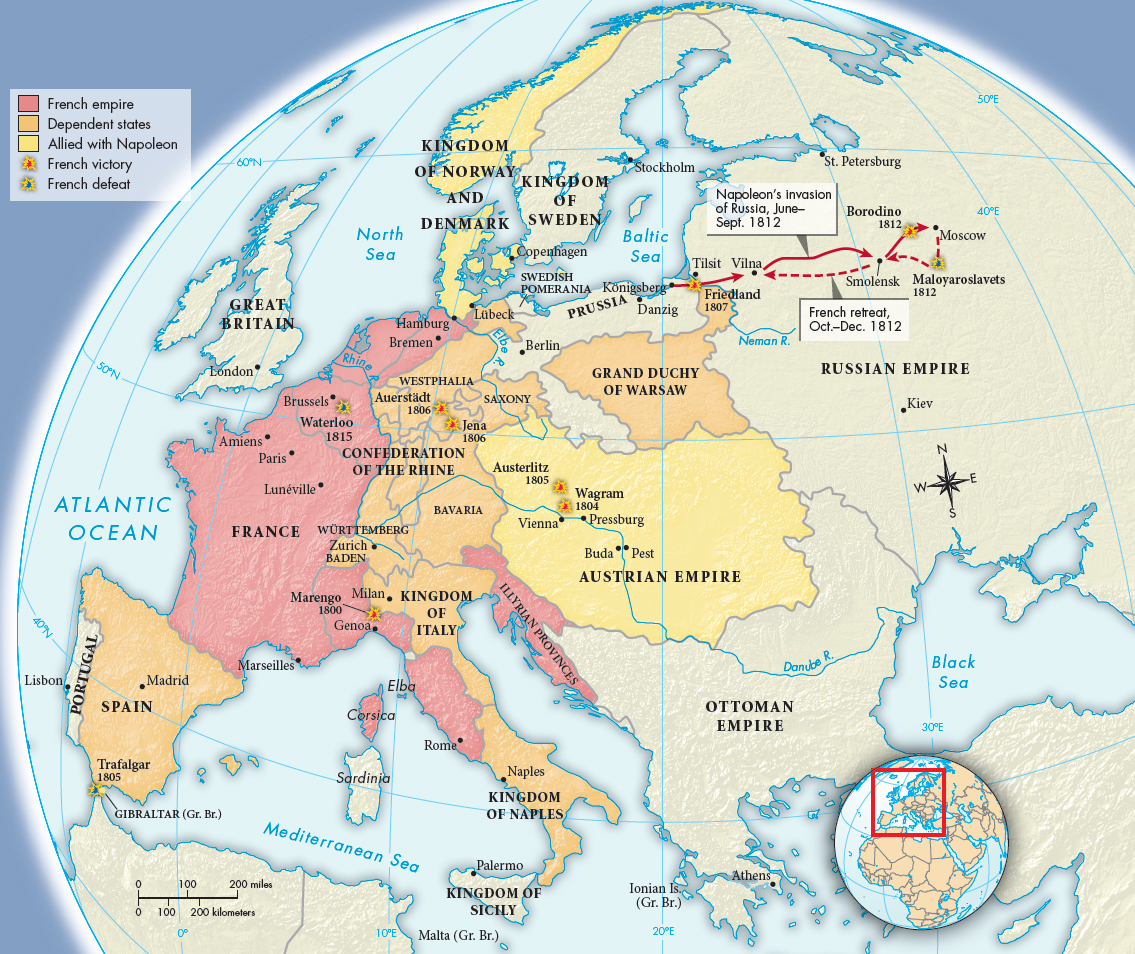A History of World Societies:
Printed Page 669
A History of World Societies Value
Edition: Printed Page 671
The Grand Empire and Its End
Increasingly, Napoleon saw himself as the emperor of Europe, not just of France. The so-

The impact of the Grand Empire on the peoples of Europe was considerable. In the areas incorporated into France and in the satellites, Napoleon abolished feudal dues and serfdom. Yet he had to put the prosperity and special interests of France first in order to safeguard his power base. Levying heavy taxes in money and men for his armies, Napoleon came to be regarded more as a conquering tyrant than as an enlightened liberator. Thus French rule sparked patriotic upheavals and encouraged the growth of reactive nationalism.
The first great revolt occurred in Spain. In 1808 Napoleon deposed Spanish king Ferdinand VII and placed his own brother Joseph on the throne. A coalition of Catholics, monarchists, and patriots rebelled against this attempt to turn Spain into a satellite of France. French armies occupied Madrid, but the foes of Napoleon fled to the hills and waged uncompromising guerrilla warfare. Events in Spain sent a clear warning: resistance to French imperialism was growing.
Yet Napoleon pushed on. In 1810, when the Grand Empire was at its height, Britain still remained at war with France, helping the guerrillas in Spain and Portugal. The Continental System was a failure. Instead of harming Britain, the system provoked the British to set up a counter-
Napoleon’s invasion of Russia began in June 1812 with a force that eventually numbered 600,000, probably the largest force yet assembled in a single army. Only one-
Leaving his troops to their fate, Napoleon raced to Paris to raise another army. Meanwhile, Austria and Prussia deserted Napoleon and joined Russia and Britain in the Treaty of Chaumont in March 1814, by which the four powers formed the Quadruple Alliance to defeat the French emperor. Less than a month later, on April 4, 1814, a defeated Napoleon abdicated his throne. After this unconditional abdication, the victorious allies exiled Napoleon to the island of Elba off the coast of Italy.
In February 1815 Napoleon staged a daring escape from Elba. Landing in France, he issued appeals for support and marched on Paris. French officers and soldiers who had fought so long for their emperor responded to the call. But Napoleon’s gamble was a desperate long shot, for the allies were united against him. At the end of a frantic period known as the Hundred Days, they crushed his forces at Waterloo on June 18, 1815, and imprisoned him on the island of St. Helena, off the western coast of Africa. The restored Bourbon dynasty took power under Louis XVIII, a younger brother of Louis XVI.